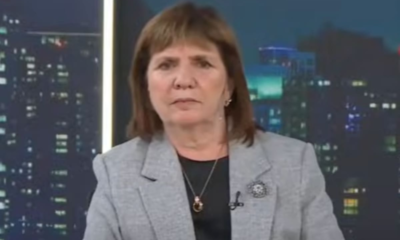INTERNACIONAL
2028 auditions for Democratic presidential nomination kick off as blue-state governor visits key early state
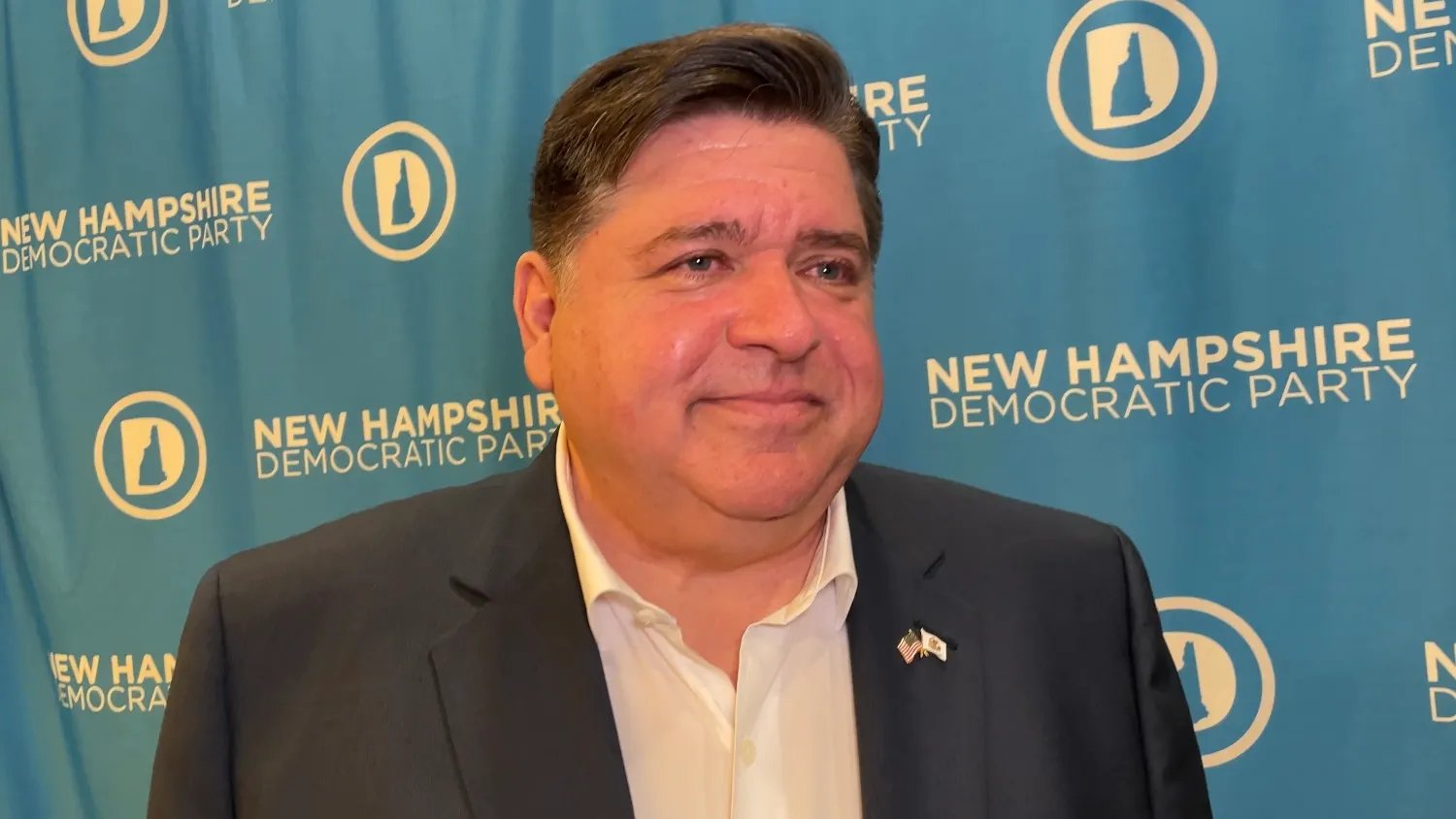
It’s 2025, but it’s starting to feel a little bit like 2028 in New Hampshire, the state that traditionally holds the first presidential primary in the race for the White House.
That’s because Illinois Gov. JB Pritzker, the billionaire two-term Democrat from the solidly blue Midwestern state, is coming to New Hampshire this weekend to headline the state party’s largest annual fundraising gala.
Pritzker, who has become one of his party’s most vocal critics of the sweeping and controversial moves by President Donald Trump during the first three months of his second tour in the White House, is seen as a potential contender for the Democrats’ 2028 presidential nomination.
And trips to New Hampshire — which for over a century has held the first primary in the race for the White House — are seen as an early indicator of a politician’s interest in running for the presidency in the next election.
HERE ARE THE DEMOCRATS WHO MAY EVENTUALLY RUN FOR THE WHITE HOUSE IN 2028
Illinois Gov. JB Pritzker is interviewed by Fox News Digital at a New Hampshire delegation breakfast at the Democratic National Convention in Chicago on Aug. 22, 2024. (Paul Steinhauser)
«We’ve got to be ready for the fight,» Pritzker said when asked by Fox News Digital what his message will be when he delivers the keynote address at the New Hampshire Democratic Party’s annual McIntyre-Shaheen 100 Club dinner.
The governor, a member of the Pritzker family that owns the Hyatt hotel chain and who has started several of his own venture capital and investment startups, argued that the nation is «in a constitutional crisis» and that «we have too many people who are ill affected by the policies of the Trump administration.»
«This is the moment for people to stand up and fight,» he added.
Pritzker, 60, is the first potential Democratic presidential hopeful to visit New Hampshire, or any other early primary state, since Democrats lost the White House and their Senate majority and failed to retake the House in November.
And Trump and Republicans down-ballot made gains with key parts of the Democrats’ base, including with Black, Hispanic and younger voters.
HEATING UP: PRESEASON MOVES IN 2028 PRESIDENTIAL RACE GETTING UNDERWAY
In the wake of those setbacks, Democrats have experienced increased intra-party tensions with an angry and energized base itching to fight back against Trump. That anger is directed not only at Trump and Republicans, but also at Democrats, with many in the party’s base upset that leaders haven’t been effective or vocal enough in pushing back against the president.
It’s also led to reflection about what the Democratic Party stands for and its direction moving forward amid flagging favorable ratings in national polling.
Two-term California Gov. Gavin Newsom, another high-profile Democrat who likely also has national ambitions in 2028, said earlier this week in an interview with «The Hill» that he wasn’t sure what the party truly represents.
«I don’t know what the party is,» Newsom said. «I’m still struggling with that.»

California Gov. Gavin Newsom, who was a top surrogate for Democrats during the 2024 presidential election, speaks with voters during a stop at a highway rest area in Hooksett, New Hampshire, on July 8, 2024. (Fox News – Paul Steinhauser)
Asked if he’s also struggling, Pritzker responded, «I’ve been clear my whole life. The Democratic Party stands up for working people. Stands up for working families. We’re the party of civil rights. We’re the party of human rights. No doubt about that, in my mind.»
Pritzker, who is not prevented by term limits from running for re-election in 2026, has yet to say if he’ll make a bid for a third term steering Illinois. But the clock is ticking, with the filing period opening up later this year and the state’s primary just 11 months away.
HEAD HERE FOR THE LATEST FOX NEWS REPORTING AND OPINION ON JB PRITZKER
«Given the circumstances of getting on the ballot for people, I would need to make a decision and announce it by, you know, by latest July,» Pritzker said when asked about his timetable for making a decision.
But it’s a possible presidential run by Pritzker that is grabbing headlines.

Illinois Gov. JB Pritzker says he will decide by July on whether he will seek re-election in 2026. (Brian Cassella/Chicago Tribune via AP, Pool)
Chicagoan Bill Daley, who served as former President Bill Clinton’s commerce secretary and former President Barack Obama’s chief of staff, told The Wall Street Journal last week that «there is no doubt that he [Pritzker] is going to run.»
Pritzker, asked about Daley’s prediction, said, «I’d guess I’d remind you that he didn’t support me when I ran for governor the first time… I don’t know where he gets his information.»
And on the possibility of launching a national campaign in the 2028 election cycle, Pritzker said, «All I can tell you is, I’m focused on the question of whether I will run for re-election as governor, and on defeating the policies of Donald Trump.»
DEMOCRATS’ VICE CHAIR GETS ULTIMATUM: STAY NEUTRAL IN PRIMARIES OR STEP DOWN
The governor is no stranger to New Hampshire. He headlined the 2022 New Hampshire Democratic Party convention, and he returned last September to campaign on behalf of then-Vice President Kamala Harris, who replaced then-President Joe Biden as the party’s presidential nominee in July. Pritzker made multiple stops, including addressing union members at the New Hampshire AFL-CIO’s annual Labor Day breakfast.
Pritzker was among those vetted by the Harris presidential campaign as a possible running mate.
The governor, who led a successful effort to host the 2024 Democratic National Convention in Chicago, was also among the potential 2028 White House contenders to speak during the convention week at the New Hampshire Democratic Party delegation’s daily breakfasts.
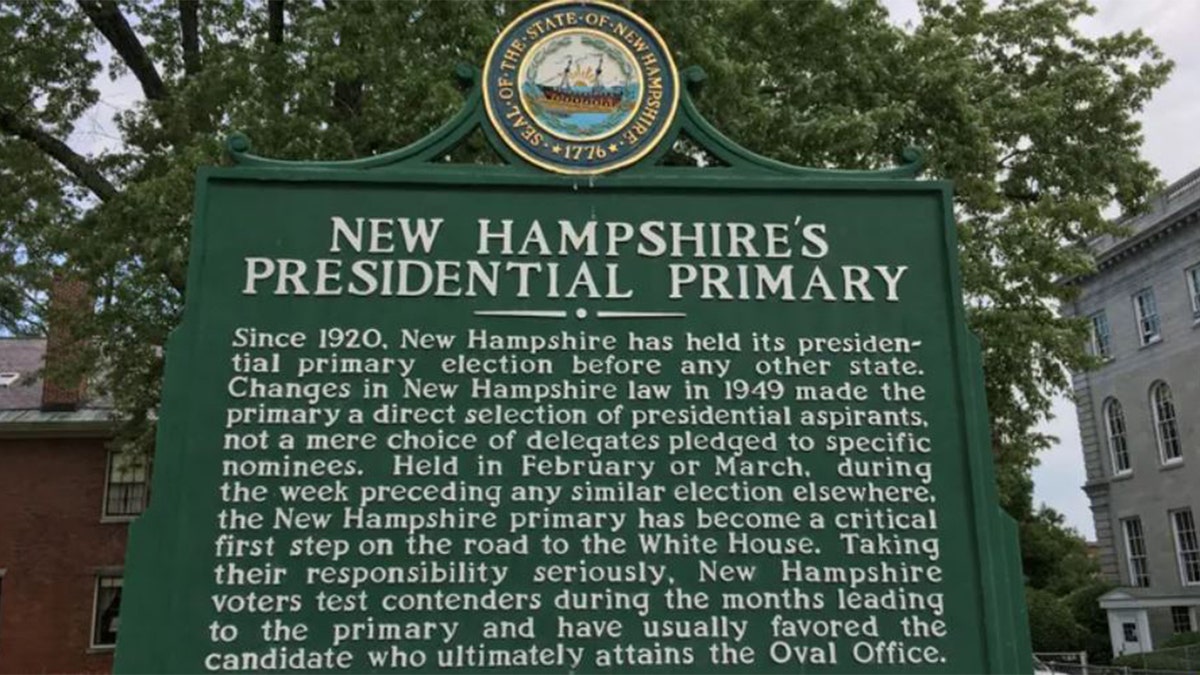
A sign outside the state capital building in Concord, New Hampshire, spotlights the state’s treasured position for the past century in holding the lead-off presidential primary. (Fox News – Paul Steinhauser)
Veteran New Hampshire-based Democratic consultant Jim Demers noted that «for many New Hampshire Democrats, his [Pritzker’s] visit is an early audition for 2028.»
«It comes at a time when voters are really looking for leadership, someone who will challenge what Donald Trump is doing. So, what he says will be weighed very heavily,» he added.
Demers, pointing to Pritzker’s handful of trips to the Granite State over the past couple of years, said that «every time he has visited with New Hampshire voters, he has delivered a message that has resonated very well.»
Neil Levesque, the longtime director of the New Hampshire Institute of Politics at Saint Anselm College, said that «Pritzker is coming into a highly political state at an opportune time because of how fired up and charged up Democrats are in opposition to President Trump.»
And he noted that the stop «will kick off the first of multiple visits by multiple potential candidates, considering that Democrats are hungry for an opposition.»
While Pritzker’s visit is the first as the very early moves in the 2028 White House race get underway, behind the scenes there’s already action.
A Granite State-based Democratic strategist who asked to remain anonymous to speak more freely shared that activists in New Hampshire are receiving fundraising emails on a regular basis from some of the potential candidates for 2028.
«Every week I receive a dozen,» the strategist said, adding that the messages are signed by Pritzker, Pennsylvania Gov. Josh Shapiro, Michigan Gov. Gretchen Whitmer, Kentucky Gov. Andy Beshear, Sen. Cory Booker of New Jersey, Rep. Ro Khanna of California and other potential 2028 contenders.
The strategist said the possible White House hopefuls are «driving messaging and their names through this constant barrage of emails.»
While the stop by Pritzker may seem very early, it’s actually occurring later in the calendar than the first stop in an early-voting state in the 2024 presidential election cycle.
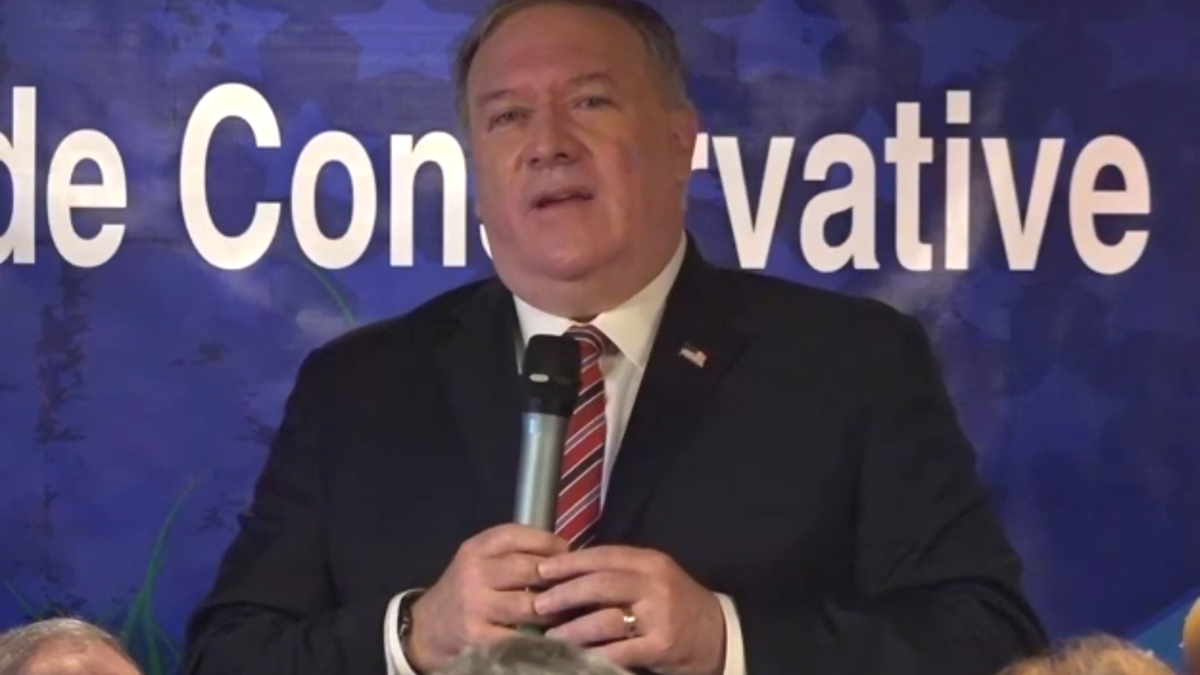
Former Secretary of State Mike Pompeo speaks at a breakfast hosted by the Westside Conservative Club in Urbandale, Iowa, on March 26, 2021.
Mike Pompeo, the former congressman from Kansas who later served as CIA director and then Secretary of State in Trump’s first administration, spoke in Iowa in late March 2021.
CLICK TO GET THE FOX NEWS APP
Pompeo, who took a hard look at running for the 2024 GOP presidential nomination before deciding against launching a campaign, was the first of the potential Republican White House hopefuls that cycle to visit one of the early-voting primary and caucus states.
Politics,Elections,J.B. Pritzker,Gavin Newsom,Donald Trump,New Hampshire,Presidential Primaries
INTERNACIONAL
Rosas negras y ruinas sumergidas: así es Halfeti, la ciudad escondida en el Éufrates que resurgió entre el mito y la modernidad
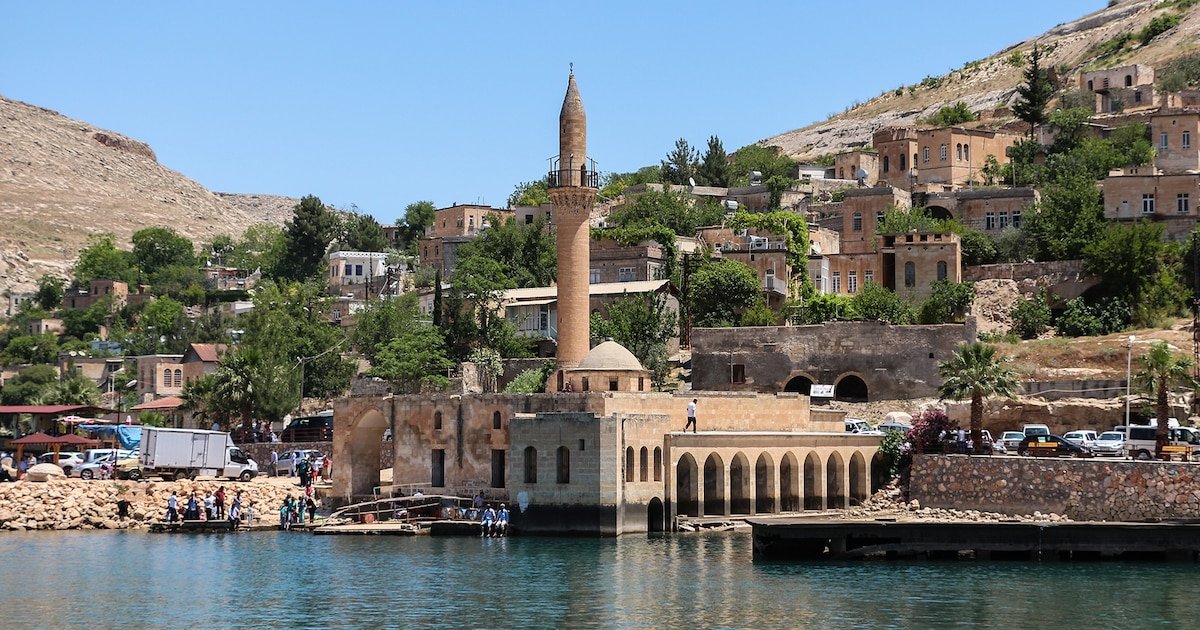
En el sureste de Turquía, a orillas del legendario río Éufrates, una ciudad emerge parcialmente de las aguas, envuelta en misterio y leyendas.
Halfeti, conocida como la “ciudad sumergida”, tuvo que transformar radicalmente su fisionomía tras quedar parcialmente bajo el agua por la construcción de la presa de Birecik, en el año 2000.
Actualmente, este enclave no solo atrae a visitantes por su singular paisaje y arquitectura sumergida, sino que también fascina al mundo con el enigma de sus famosas “rosas negras“, flores que han dado lugar a mitos, debates científicos y un renovado sentido de identidad local, según reportó CNN Travel.

A principios del nuevo milenio, la construcción de la presa de Birecik, una estructura de 60 metros de altura y 2,4 kilómetros de ancho, provocó la inundación de dos pueblos y diez aldeas en la provincia de Sanliurfa.
Según consignan medios locales, alrededor del 40% de Halfeti, que contaba con unos 2.600 habitantes, quedó sumergido bajo las aguas. Entre las edificaciones perdidas se encontraban numerosas casas de piedra, comercios y una parte significativa de la Merkez Camii, la mezquita central del siglo XIX.
La presa de Birecik forma parte de un ambicioso plan de desarrollo para el sureste de Anatolia, que incluye varias de estas estructuras a lo largo de los ríos Éufrates y Tigris. Su embalse, de 52 kilómetros cuadrados, se diseñó para regar 70.000 hectáreas de tierras agrícolas y generar unos 2.500 GWh de electricidad al año, suficiente para abastecer a casi un millón de hogares turcos.

Sin embargo, el impacto en la población local fue profundo y, en muchos casos, doloroso. Más de 6.000 personas tuvieron que ser reubicadas, y la comunidad perdió parte de su patrimonio tangible e intangible. Erhan Yildirim, investigador local, historiador y guía profesional, expresó a CNN Travel: “No se puede recuperar la cultura; la cultura permanece bajo el agua”.
Antes de la inundación, la economía de esta población era, básicamente, agropecuaria, con una reputación especial por la producción de pistachos. Muslum Karaman, operador de barco local, relató a CNN Travel que “la gente de Halfeti solía ganarse la vida con la cría de ganado y la agricultura”. Sin embargo, la llegada de la presa y la consiguiente transformación del entorno los obligaron a buscar nuevas formas de subsistencia.
Karaman explicó que la ciudad “ha cambiado completamente hacia el turismo“, y que muchos habitantes han adaptado sus viviendas para convertirlas en restaurantes, boutique y cafeterías. Esta reinvención económica le permitió a la comunidad mejorar su calidad de vida y aprovechar el creciente interés de los visitantes por la singularidad de Halfeti.

En la actualidad, Halfeti se posiciona como un destino turístico singular. Los visitantes llegan atraídos por la posibilidad de recorrer en barco, moto acuática o flyboard la arquitectura sumergida de la ciudad antigua.
El buceo se ha convertido en una de las actividades favoritas, impulsada por la apneísta turca Şahika Ercümen, quien en 2020 realizó una inmersión en Halfeti para sensibilizar sobre la contaminación por plásticos.
Además de la arquitectura sumergida, los turistas pueden realizar excursiones en barco hasta la fortaleza de Rumkale, situada a orillas del Éufrates. Este sitio histórico, cuyos cimientos datan del Imperio bizantino, permite a los visitantes explorar restos de fortificaciones armenias y conocer la compleja historia de la región, marcada por el paso de diferentes civilizaciones.

Uno de los mayores atractivos de Halfeti es el misterio de sus “rosas negras“, flores que han dado lugar a leyendas y debates científicos. Según la tradición local, es el único lugar del mundo donde florecen.
Yildirim sostiene que “si cultivas la rosa negra en cualquier otro lugar, nunca te dará el mismo color”. No obstante, expertos internacionales cuestionan su existencia. Michael Marriott, reconocido especialista floricultura, declaró a CNN Travel: “No creo que ninguna de las llamadas flores negras sea realmente negra”.
Por otra parte, Guy Barter, horticultor jefe de la Royal Horticultural Society del Reino Unido, coincide en que “las rosas negras, y en general las flores negras, rara vez son completamente negras, si no de un granate muy intenso o, como en este caso, de un rojo muy oscuro”.
El color oscuro de las rosas de Halfeti se atribuye a las condiciones únicas del suelo y el clima de la región. Marriott sugiere que los agricultores locales podrían estar utilizando raíces originales de las rosas, capaces de prosperar en suelos más ácidos, lo que oscurece los pétalos. Birsen Aşağı, vendedora local, atribuye el fenómeno a las “condiciones climáticas de aquí”.

A pesar de las dudas sobre su autenticidad, las rosas negras de Halfeti han adquirido fama internacional. Marcas como la perfumista británica Penhaligon’s han lanzado fragancias inspiradas en la flor, y los productos derivados se han convertido en un símbolo de la ciudad.
Las leyendas locales enriquecen el mito de la rosa negra. Una de ellas narra la historia de Adir, un arquitecto que construyó la mezquita de la ciudad, y su nieta Vartuhi, quien cultivaba las rosas más hermosas.
Vartuhi se enamoró de Firat, un huérfano del otro lado del río, pero su amor fue prohibido. Desesperados, ambos se arrojaron al Éufrates y, desde entonces, las rosas de Halfeti florecen negras en señal de luto.
Otra versión, relatada por Yildirim, atribuye la flor al Diablo, quien, tras el asesinato de una niña inocente, decretó que la rosa negra solo florecería en el lugar de su muerte, como símbolo de dolor y venganza.

A pocos kilómetros del pueblo, la fortaleza de Rumkale se alza como testigo de la historia milenaria de la región. Según CNN Travel, sus cimientos datan del Imperio bizantino, entre los siglos V y VI, aunque existen indicios de estructuras anteriores.
Durante los siglos XII y XIII, la fortaleza fue residencia del Catholicós, líder espiritual de la Iglesia armenia, y posteriormente cayó en manos de los mamelucos en 1292, antes de pasar al control del Imperio Otomano. La arquitectura de Rumkale, visible desde el río, recuerda la compleja y a menudo turbulenta historia de Anatolia, marcada por el cruce de culturas y religiones.
En 2013, Halfeti fue reconocida como parte de la red Cittaslow, un movimiento internacional que promueve la calidad de vida y la preservación de la cultura local.
INTERNACIONAL
Green Valley en América Latina: la oportunidad de la infraestructura digital verde en la era de la IA

Durante décadas, la infraestructura tecnológica desde los chips hasta los centros de datos fue un tema relegado a los márgenes de la discusión económica y política. Hoy, esa infraestructura es protagonista central. Es allí donde convergen la energía y los datos para impulsar la inteligencia artificial (IA), y donde se define buena parte de la competitividad futura de los países. En este nuevo mapa, América Latina y el Caribe tienen una ventana de oportunidad concreta: consolidarse como una región atractiva para el desarrollo de centros de datos verdes (green data centers), alimentados por energías renovables y articulados a una red regional que impulse la industrialización de servicios basados en IA.
La ventaja comparativa de la región es sólida y múltiple. Esta se basa en su matriz energética, su geografía y su capital humano. Según datos del Banco Mundial y la Agencia Internacional de Energía (AIE), más del 60% de la generación eléctrica en América Latina proviene de fuentes renovables, superando a regiones como Europa Occidental (40%) o Norteamérica (30%). Países como Uruguay, Paraguay y Costa Rica ya operan con matrices energéticas 100% limpias prácticamente, mientras que Brasil supera el 80% con una mezcla de hidroeléctrica, solar y eólica. Esta condición no es trivial. Para modelos de IA de gran escala, el costo energético puede representar hasta el 60% del costo total operativo de un centro de datos. Según datos de la UIT, el consumo de electricidad de Alphabet, Amazon y Microsoft alcanzó los 100 TWh en 2023, prácticamente lo que consumen juntos Colombia y República Dominicana en un año.
Sumado a lo anterior, la geografía y el clima juegan a favor de la región. Las zonas de altiplano, con temperaturas medias estables y buena conectividad, permiten reducir el gasto en enfriamiento uno de los mayores costos energéticos en operación de servidores. Bogotá, Quito, Montevideo o partes del sur de Brasil ofrecen condiciones ideales para alojar infraestructura de cómputo intensivo.
La estructura demográfica también representa un activo con una población de más de 400 millones de personas en edad laboral y un creciente número de profesionales en ciencia de datos, ingeniería de software, así como en redes. Las plataformas de formación como Platzi, Henry o Digital House están nutriendo un ecosistema de talento regional. Paulatinamente, universidades en Brasil, Chile, Colombia o México han avanzado en currículos orientados a IA y computación de alto rendimiento.
En el ámbito internacional, la oportunidad para captar inversión extranjera directa es clara. Europa, bajo el marco del Pacto Verde y la taxonomía de finanzas sostenibles, exigirá cada vez más una trazabilidad clara de la huella de carbono en las cadenas de valor digitales. Una empresa europea que entrena sus modelos en un green datacenter certificado en América Latina puede reducir sus emisiones reportadas y cumplir así sus compromisos climáticos. Asimismo, los avances tecnológicos están impulsando que las energías renovables sean incluso más asequibles que las tradicionales. Todo ello configura argumentos de pesos de atracción de capital europeo, asiático o norteamericano.
Ahora bien, la oportunidad no radica solamente en hospedar servidores, ni en hacerlo individualmente país a país. El valor agregado está en que estos centros de datos se conviertan en motores de desarrollo tecnológico local, con lógica de integración regional. Esto exige políticas de encadenamiento productivo que prioricen proveedores locales de infraestructura, servicios de nube, software y ciberseguridad; acceso preferencial a pymes tecnológicas; y condiciones para que universidades y centros de investigación accedan a capacidad computacional como bien público. Y articulación de una red federada de centros de datos interconectados, con redundancia, interoperabilidad y gobernanza compartida, que permita: el entrenamiento distribuido de modelos de IA; el almacenamiento de grandes volúmenes de datos públicos y privados; la provisión de servicios a gobiernos, empresas y universidades. Esta red también puede convertirse en un activo geopolítico, al reducir la dependencia tecnológica con respecto a infraestructuras extrarregionales.
- Establecer marcos regulatorios nacionales y regionales (o al menos entre algunos países impulsores) para green datacenters, con criterios técnicos de certificación.
- Establecer incentivos tributarios y requisitos de eficiencia energética.
- Crear un fondo regional de infraestructura digital verde, con apoyo de los bancos regionales (BID, CAF, Banco Mundial) y bancos de desarrollo nacionales, que cofinancie proyectos con alto impacto en empleo, transición energética y digitalización.
- Incentivar consorcios público-privados para el desarrollo de modelos de IA sectoriales, en salud, educación, movilidad, energía o agroindustria, utilizando la capacidad de cómputo regional como palanca de innovación.
- Incorporar cláusulas de sostenibilidad digital en los acuerdos comerciales, incluyendo interoperabilidad de datos, transferencia tecnológica y estándares abiertos para plataformas de IA.
- Establecer un observatorio latinoamericano de huella digital y climática, que mida el impacto ambiental de la infraestructura tecnológica y también promueva prácticas responsables.
La buena noticia, además, es que en algunos países las políticas públicas están – esta vez sí – , acelerando el paso al ritmo de la oportunidad. Brasil ha aprobado incentivos fiscales para infraestructura digital con eficiencia energética. Chile presentó en 2022 su Hoja de Ruta de Centros de Datos al 2030 con metas de sostenibilidad. En México, estados como Querétaro han consolidado clústeres tecnológicos donde operan Oracle, Microsoft y AWS. A ellos esperamos que se unan Uruguay y Argentina, si avanzan con marcos regulatorios nacionales impulsados desde sus presidencias.
La región no necesita copiar Silicon Valley o Shenzhen. Puede crear su propio Green Valley: un ecosistema donde la infraestructura digital, y en particular los centros de datos verdes, estén al servicio de la sostenibilidad, la soberanía tecnológica y el desarrollo humano. El momento de actuar es ahora. La inteligencia artificial será el motor económico de las próximas décadas. América Latina puede ser no solo consumidora, sino productora y exportadora de soluciones si logra construir la infraestructura inteligente y verde que el siglo XXI exige.
INTERNACIONAL
Trump signs $9B rescissions package into law, revoking funding for foreign aid, NPR
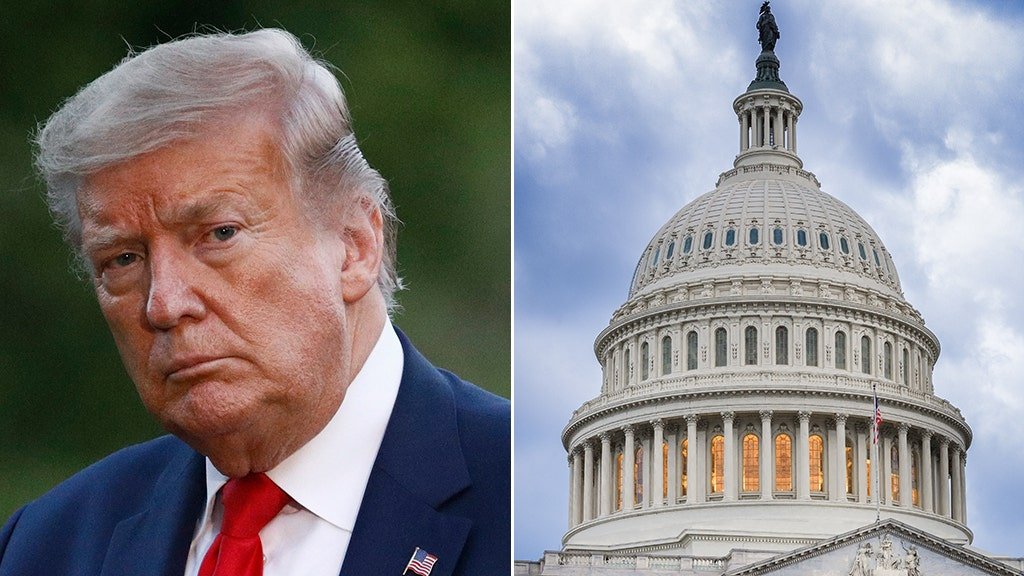
NEWYou can now listen to Fox News articles!
President Donald Trump signed into law his roughly $9 billion rescissions package to scale back already approved federal funds for foreign aid and public broadcasting on Thursday, after both chambers of Congress approved the legislation earlier in the month, sources familiar to the matter have confirmed.
The signing marks another legislative victory for the Trump administration just two weeks after the president signed into law his massive tax and domestic policy measure, dubbed the «big, beautiful bill.»
The rescissions package pulls back nearly $8 billion in funding Congress already approved for the U.S. Agency for International Development (USAID), a previously independent agency that provided impoverished countries aid and offered development assistance.
However, the Trump administration has faced layoffs and has been absorbed into the State Department amid concerns from the Trump administration that the organization did not advance U.S. core interests.
‘LONG OVERDUE’: SENATE REPUBLICANS SLAM THROUGH TRUMP’S CLAWBACK PACKAGE WITH CUTS TO FOREIGN AID, NPR
President Donald Trump talks to reporters during a Cabinet meeting. (Getty Images)
The rescissions package also pulls more than $1 billion from the Corporation for Public Broadcasting (CPB) that provides federal funding for NPR and PBS.
The House previously approved its version of the rescissions package in June, and voted on the final version of the measure early on Friday after the Senate narrowly approved the measure by a 51-48 margin early on the morning of July 17. Republican Sens. Susan Collins of Maine and Lisa Murkowski of Alaska voted alongside Democrats to oppose the package.
Senate Majority Leader John Thune, R-S.D., said that the measure aligned with other priorities to eradicate waste, fraud and abuse within the federal government and is a step in the right direction.
«I appreciate all the work the administration has done in identifying wasteful spending,» Thune said in a speech ahead of the vote. «And now it’s time for the Senate to do its part to cut some of that waste out of the budget. It’s a small but important step toward fiscal sanity that we all should be able to agree is long overdue.»
SENATE MARCHES TOWARD PASSING TRUMP’S $9B CLAWBACK BILL AFTER DRAMATIC LATE-NIGHT VOTES
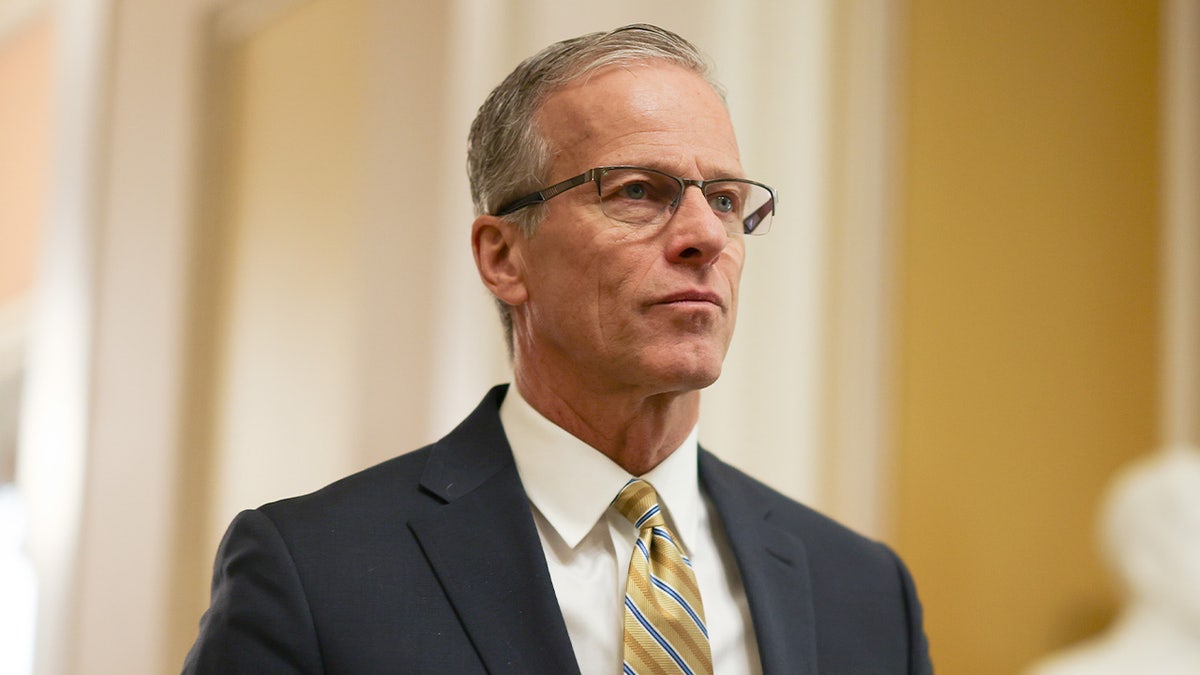
U.S. Senate Majority Leader John Thune (R-SD) heads to the Senate Chamber to vote on a bill on January 22, 2025 in Washington, DC. (Kayla Bartkowski/Getty Images)
Meanwhile, Democrats have said that the cuts to foreign aid are a win for China and Russia, and that the package puts national security at risk. Additionally, Democrats argue Republicans’ employment of rescissions sets a dangerous precedent that could jeopardize a host of programs down the line.
«If Republicans slash more American aid, it will create a dangerous vacuum that the Chinese Communist Party will continue to eagerly fill,» Senate Minority Leader Chuck Schumer, D-N.Y., said on July 15 on the Senate floor.
TRUMP’S $9 BILLION CLAWBACK PASSES FIRST SENATE TEST, WHILE MORE HURDLES AWAIT
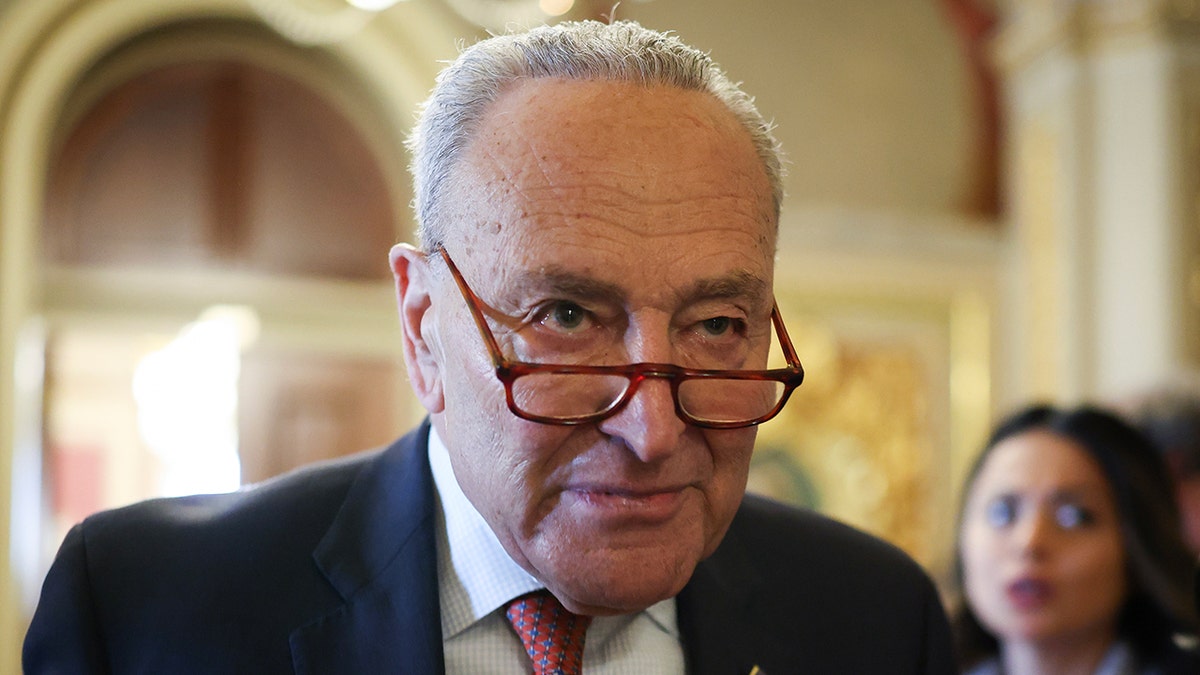
A memo from a major liberal grassroots group called out Democratic lawmakers like Senate Minority Leader Chuck Schumer, D-N.Y., for their passive approach to resisting President Trump. (Kayla Bartkowski/Getty Images)
«They are using pocket rescissions to poison the bipartisan appropriations process, to break the law to steal funds that Congress appropriated, and they’re doing it at a party-line vote,» Schumer said. «Worse, they’re letting Donald Trump decide for himself which programs to defund, and that puts everything at risk – healthcare, education, food assistance, public health. Everything – everything – becomes at risk. That is what happens if a package like this is allowed to become law.»
CLICK HERE TO GET THE FOX NEWS APP
Although Trump previously attempted to advance a rescissions package in 2018 that also targeted foreign aid and public broadcasting funds during his first term, it failed to gain support in the Senate after Collins and then-Sen. Richard Burr, R-N.C., voted against it.
The last time Congress approved a rescissions package was in 1999.
Fox News’ Alex Miller contributed to this report.

 POLITICA3 días ago
POLITICA3 días ago🗳️ El chamuyo de las elecciones en la Provincia: se postulan, pero no a asumen

 ECONOMIA2 días ago
ECONOMIA2 días agoEl consumo en Argentina crece 4% en junio, ante menor inflación y más crédito

 CHIMENTOS2 días ago
CHIMENTOS2 días agoEl desgarrador testimonio del hermano de Locomotora Oliveras: “El daño es irreversible, solo puede vivir con respirador”


























